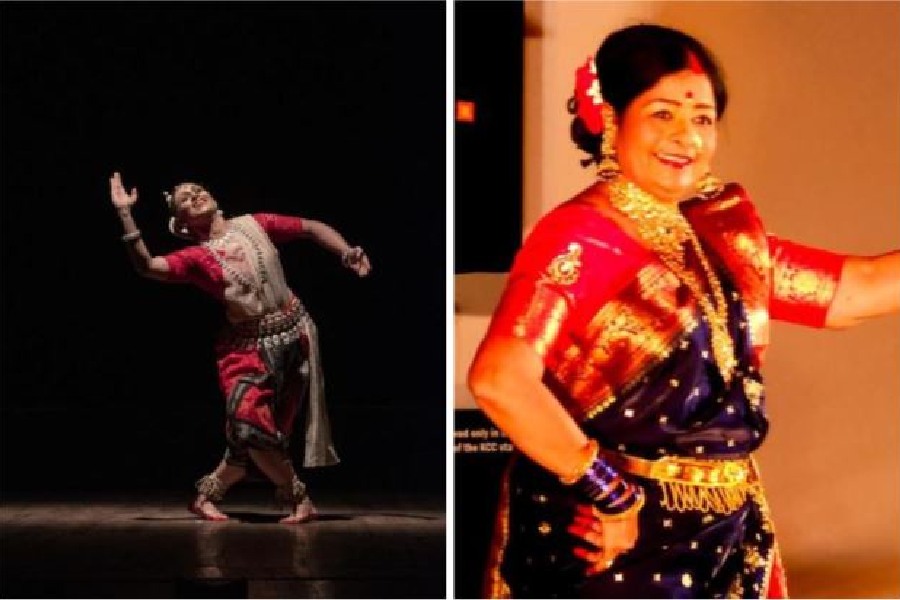It is only an effortless storyteller like Sharmila Biswas who can,with a few assured brush strokes, attempt to trace something as grand and complex as the history of Odissi dance through choreographic possibilities. Her piece, Sutra (picture, left), which was recently staged at G.D. Birla Sabhagar, may seem ambitious, but given her historiographer’s panache, engaging dance design and sweeping visual imagination, she is able to create a rewarding performance of extraordinary authenticity and dynamism.
Biswas tries to look at Odissi not only as an insider but also with the curiosity and wonder of an outsider who is on a journey of discoveries. Her search for inspiration has taken her to the rural performative traditions of Odisha, to community practices in obscure temples, and to the games that children play in the alleyways of remote villages to cull out songs, music, rhythmic patterns and movement structures. She integrates these delightfully into her work with astonishing aesthetics.
In Sutra, she linearly sketches the many trajectories that the classical form has taken in its course. From the primitive dance traditions, such as those of the Sauras, Aryans and Bratyas, to the court and temple dances, and the forms practised in the village akhadas, it records the many influences and intersections on the journey in detail.
Sutra’s music is enriched by the voice of Parashmani Mahari, who was the last devadasi of the Jagannath temple in Puri, and the primitive vocals were rendered by Savitri and Gabriel Sabar. Biswas gathers one of the connecting threads of Odissi by bringing in Gotipua students from Guru Birabar Sahu’s akhada. Her piece revisits tribal, folk and martial art forms to provide context and establish the ecosystem that contributed to the growth of the dance, unravelling the many layers of the past 2,000 years that have culminated in the present identity of the form.
Another evening of dance, this time at the Kolkata Centre for Creativity, presented by Odissi Vision and Movement Centre and Taal Connect, began with a bravura exposition of the Mayurbhanj Chhau from Odisha. Trilochan Mohanta demonstrated the symmetry, grace, and beauty of the martial art form in the piece, Nataraja. Lyrical and precise in the execution of the movements, Mohanta is an acknowledged master of his form. His performance was a study in the rigorous technique and acrobatic movements used to tell stories from the epics and other ancient texts.
The Lavani legend, Shakuntala Nagarkar (picture, right), displayed her trademark sass, self-possession and swag in her two immensely entertaining performances in the city. Be it in the flick of the wrists, the swing of the hips, elaborate winks, seductive gait, amorous expressions, saucy banter or unapologetically risqué manners, she ensured that one of Calcutta’s rare trysts with Lavani was as wickedly raunchy as it was unselfconsciously feminist. With the commentary by the researcher and presenter, Bhushan Korgaonkar, providing the backdrop to this iconic traditional dance form of Maharashtra, one experienced Lavani’s empowering spirit as it negotiated the many-layered ideas of consensual relationships and menstrual problems. Usually associated with themes such as sensuality, love, and sexual prowess, it is interesting to see how Lavani has recreated itself for perky social messaging as well. Nagarkar was vibrant and fun, and oh, did her audience respond! Her a-laugh-a-minute act got her uproarious applause and whistles, all part of the rules of the game of Lavani.










